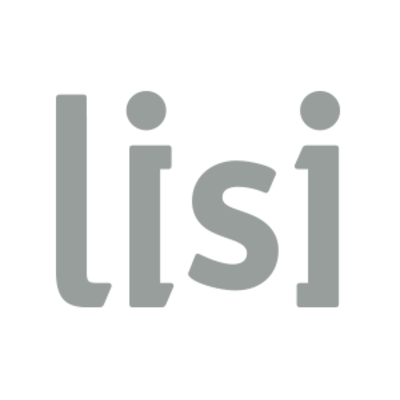ENGINEERING TECHNICIAN I
The position
Job description
LISI AEROSPACE is ranked 60th in the global aerospace value chain and specializes in the design and manufacture of high-tech metal components to enhance aircraft safety and performance. Active since 1950 in the fastener market (no. 3 worldwide), LISI AEROSPACE has been a recognized player in metal components for aircraft engines and airframes since 2011. With its dedication to industrial excellence, LISI AEROSPACE aims to become a leader in costs, quality, deadlines and workplace safety. This mindset is represented at every level of our company and by all of our team members. At LISI AEROSPACE, we focus above all on advancement and flexibility. Every employee is empowered and has the latitude they need to carry out their assignments and develop their skills. We provide this mobility and training through our Corporate University, the LISI Knowledge Institute (LKI). As a result, our company is growing fast and always welcoming new talents.
SUMMARY
Engineering technicians work closely with Manufacturing Engineering in order to improve product flow and throughput. Helps to develop product structures/methods in accordance with product standards and specifications.
To perform this job successfully, an individual must be able to perform each essential duty and responsibility.
This document does not create an employment contract, implied or otherwise, other than an "at will" relationship.
ESSENTIAL DUTIES AND RESPONSIBILITIES
.
Other duties may be assigned. Reasonable accommodation for disabilities may be made for one or more of the following:
•Operational Drawings (DW01-DW02) – Create, maintain, and review operational engineering drawings for internally and externally threaded product based off of product engineering drawings. Use of Solidworks and AutoCAD.
•Tooling Drawings (DW04-DW05) – Create, maintain, and review tooling drawings for internally and externally threaded product based off of operational drawing requirements. Use of Solidworks and AutoCAD.
•Overlays (DW06) – Create, maintain, and review overlay drawings used to dimensionally inspect parts to ensure in-process and final requirements are met. Use of AutoCAD.
•Structures (SR01-SR02) – Create, maintain, and review product structures which define the manufacturing process flow and relevant information, such as work instructions, specifications, drawings, etc in order to meet final part standard requirements.
•Routers (SR03) – Update product routers and ensure any changes still meet final customer requirements.
•Pins Manufacturing (TK01) – Technical knowledge of pin and bolt manufacturing, including raw material requirements. Able to utilize engineering principles to understand and improve the manufacturing process. Provide technical support to other departments.
•Collars Manufacturing (TK02) – Technical knowledge of collar manufacturing, including raw material requirements. Able to utilize engineering principles to understand and improve the manufacturing process. Provide technical support to other departments.
•Nut Manufacturing (TK03) – Technical knowledge of nut manufacturing, including raw material requirements. Able to utilize engineering principles to understand and improve the manufacturing process. Provide technical support to other departments.
•Inspection (TK04) – Technical knowledge of the quality inspection methods and part standard requirements. Able to utilize engineering principles in order to understand and improve the quality inspection process. Provide technical support to other departments.
•Mechanical Testing (TK05) – Technical knowledge of the mechanical testing methods and part standard requirements. Able to utilize engineering principles in order to understand and improve the mechanical testing process. Provide technical support to other departments.
•Metallurgical (TK06) – Technical knowledge of the metallurgical analysis methods, including mount preparation and product microstructure analysis. Able to utilize engineering principles in order to understand and improve the metallurgical examination process. Provide technical support to other departments.
•Heat Treatment (TK07) – Technical knowledge of the heat treatment process for various fastener alloys, including but not limited to titanium, aluminum, stainless steel, and alloy steel. Able to utilize engineering principles in order to understand and improve the heat treatment process. Provide technical support to other departments.
•Chemical Plating (TK08) – Technical knowledge of the chemical plating process, including but not limited to aluminum anodize, titanium anodize, cadmium plating, passivation, and ion vapor deposition. Able to utilize engineering principles in order to understand and improve the chemical plating process. Provide technical support to other departments.
•Coating (TK09) – Technical knowledge of the coating process, including but not limited to aluminum pigmented coating, solid film lubrication, and cetyl alcohol application. Able to utilize engineering principles in order to understand and improve the coating process. Provide technical support to other departments.
•Non-Conforming Product (QU01) – Understanding of the manufacturing process and part standard requirements in order to properly disposition non-conforming product in a timely manner. Utilize root cause analysis tools in order to determine corrective and preventative actions.
•System Knowledge (SK01-SK02) – Knowledge of various internal systems/applications, including but not limited to M3 and LINKS. Able to navigate and troubleshoot these systems.
WAYS OF WORKING, EXPERIENCE, BEHAVIORS
To perform the job successfully, an individual should demonstrate the following competencies:
•Analytical– Collects and analyzes data in order to make sound decisions. Uses manufacturing experience to complement data, understands work flow and procedures.
•Technical Skills– Strong technical skills in manufacturing processes and methods including flow, assembly and production equipment.
•Oral Communication– Speaks clearly and persuasively in positive or negative situations; listens intently to others and seeks clarification; Provides clear and pleasant responses to inquiries regardless of the situation.
•Written Communication– Writes technical documents clearly and accurately; Transfers technical data into meaningful written documents that can be understood by all levels of the organization.
•Team Work– Balances team and individual responsibilities; Exhibits objectivity and openness to others' views; Gives and welcomes feedback; Contributes to building a positive team spirit; Puts success of team above own interests.
•Business Acumen– Understands business implications of decisions; Displays orientation to profitability; Demonstrates knowledge of market and competition; Aligns work with strategic goals.
•Cost Consciousness– Works within the direction of the department’s resources; Contributes to profits and revenue; Conserves organizational resources.
•Adaptability– Adapts to changes in the work environment; Manages competing demands; Changes approach or method to best fit the situation; Able to deal with frequent change, delays, or unexpected events.
•Planning/Organizing– Manages multiple projects, prioritizes and plans work activities; Uses time efficiently; Plans for additional resources; Sets goals and objectives; Develops realistic action plans.
•Professionalism– Approaches others in a tactful manner; Reacts well under pressure; Treats others with respect and consideration regardless of their status or position; Accepts responsibility for own actions; Follows through on commitments.
Supervisory Responsibilities
No Supervisory responsibilities.
May assist in the coaching and process teaching of interns or less experience personnel under the supervision of management.
ESSENTIAL JOB REQUIREMENTS SKILLS AND ABILITIES
Education and/or Experience
•High school diploma or GED.
•Level I: A minimum of 5 years equivalent combination of technical education and experience in a manufacturing environment.
•Level II: A minimum of 7 years of engineering experience or equivalent combination of experience and related education
•Advanced knowledge of machinery and procedures.
•Proficiency in computer skills necessary for the job function.
•Working knowledge of relevant engineering applications.
Language Skills
Ability to read, analyze and interpret professional journals, technical procedures, or governmental regulations. Ability to write reports, business correspondence and procedure manuals. The ability to effectively present information and respond to questions from groups of managers, clients, customers and the general public.
Mathematical Skills
Ability to work with mathematical concepts such as probability and statistical inference, and fundamentals of plane and solid geometry and trigonometry. Ability to apply concepts such as fractions, percentages, ratios, and proportions to practical solutions.
Computer Skills
To perform this jobs successfully, an individual should have knowledge of Microsoft Word, Microsoft Excel, Microsoft Powerpoint, and CAD preferred.
Reasoning Ability
Ability to apply common sense understanding to carry out instructions furnished in written, oral or diagram form. Ability to deal with problems involving several concrete variables in standardized situations.
Certificates, licenses, registrations
Evidence of “US person” is required under ITAR
PHYSICAL DEMANDS, WORK ENVIRONMENT, HEALTH AND ,SAFETY
Physical Demands
The physical demands described here are representative of those that must be met by an employee to successfully perform the essential functions of this job. Reasonable accommodations may be made to enable individuals with disabilities to perform the essential functions.
While performing the duties of this job, the employee is regularly required to sit for extended periods of time, and to speak or listen. The employee is frequently required to sit and requires eye-hand coordination, repetitive hand movement and manual dexterity use hands to finger, handle, or feel. The employee is occasionally required to stand for extended periods of time and walk. The employee must occasionally bend, reach to shoulder level and lift, carrying, pushing and/or pulling up to 10 pounds. Specific vision abilities required by this job include close vision, distance vision, and ability to adjust focus. Hearing level within normal/average range.
Work Environment
The work environment characteristics described here are representative of those an employee encounters while performing the essential functions of this job. Reasonable accommodations may be made to enable individuals with disabilities to perform the essential functions. The noise level in the work environment is usually moderate.
Safety and Environmental
The responsibilities of the position include compliance with company and governmental safety, environmental and hazardous materials regulations and procedures. Employee will be required to wear personal safety equipment such as safety glasses, hearing protection, or proper footwear PPE in specified areas.
LISI is an equal opportunity at will employer and does not discriminate against any employee or applicant for employment because of age, race, religion, color, disability, sex, sexual orientation or national origin.
Want to know more?

Rencontrez Edouard, Technicien Méthodes frappe à froid

Rencontrez Stephanie, Quality Manager
These job openings might interest you!
These companies are also recruiting for the position of “Electrical and Electronics Repair”.



